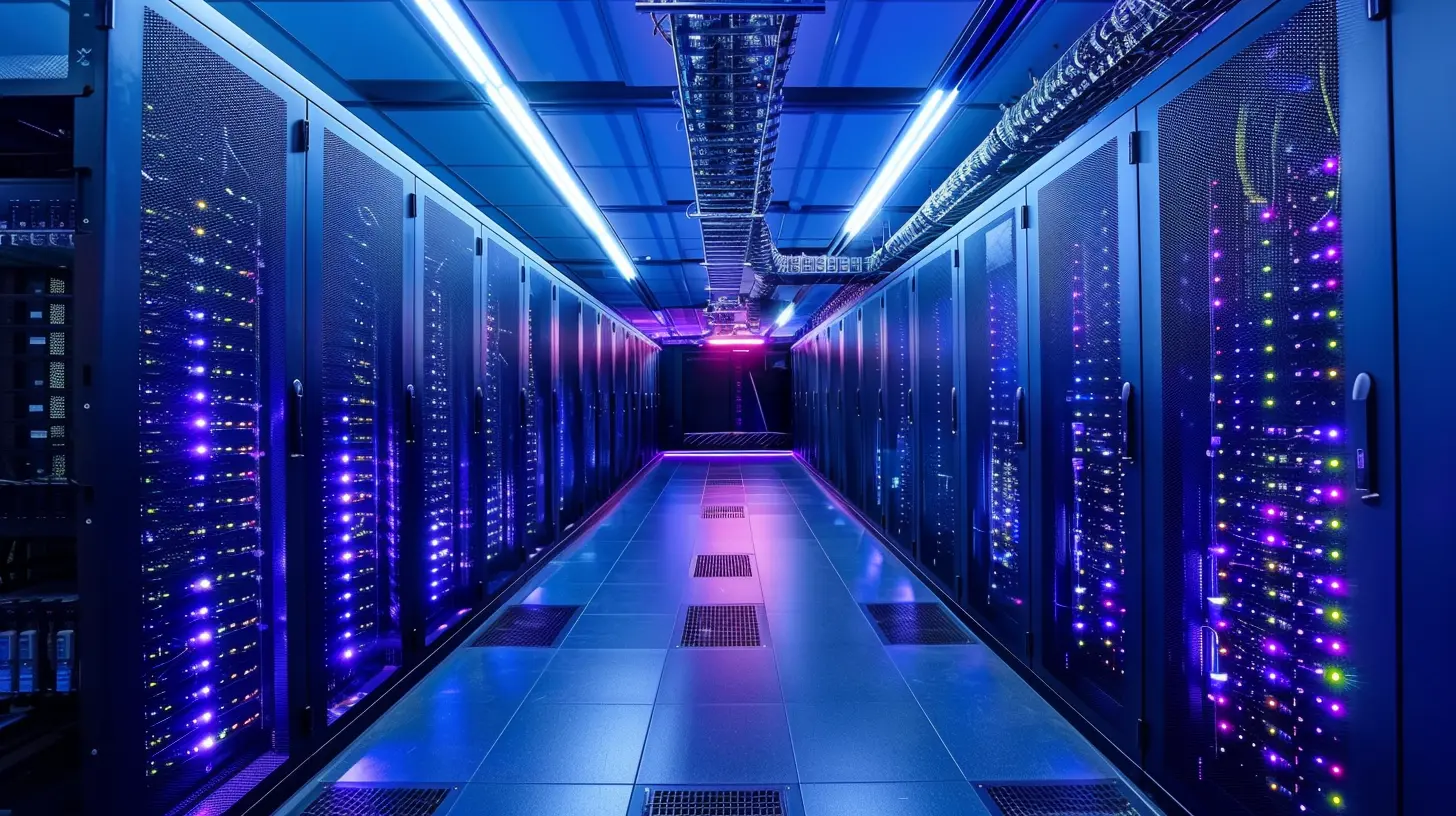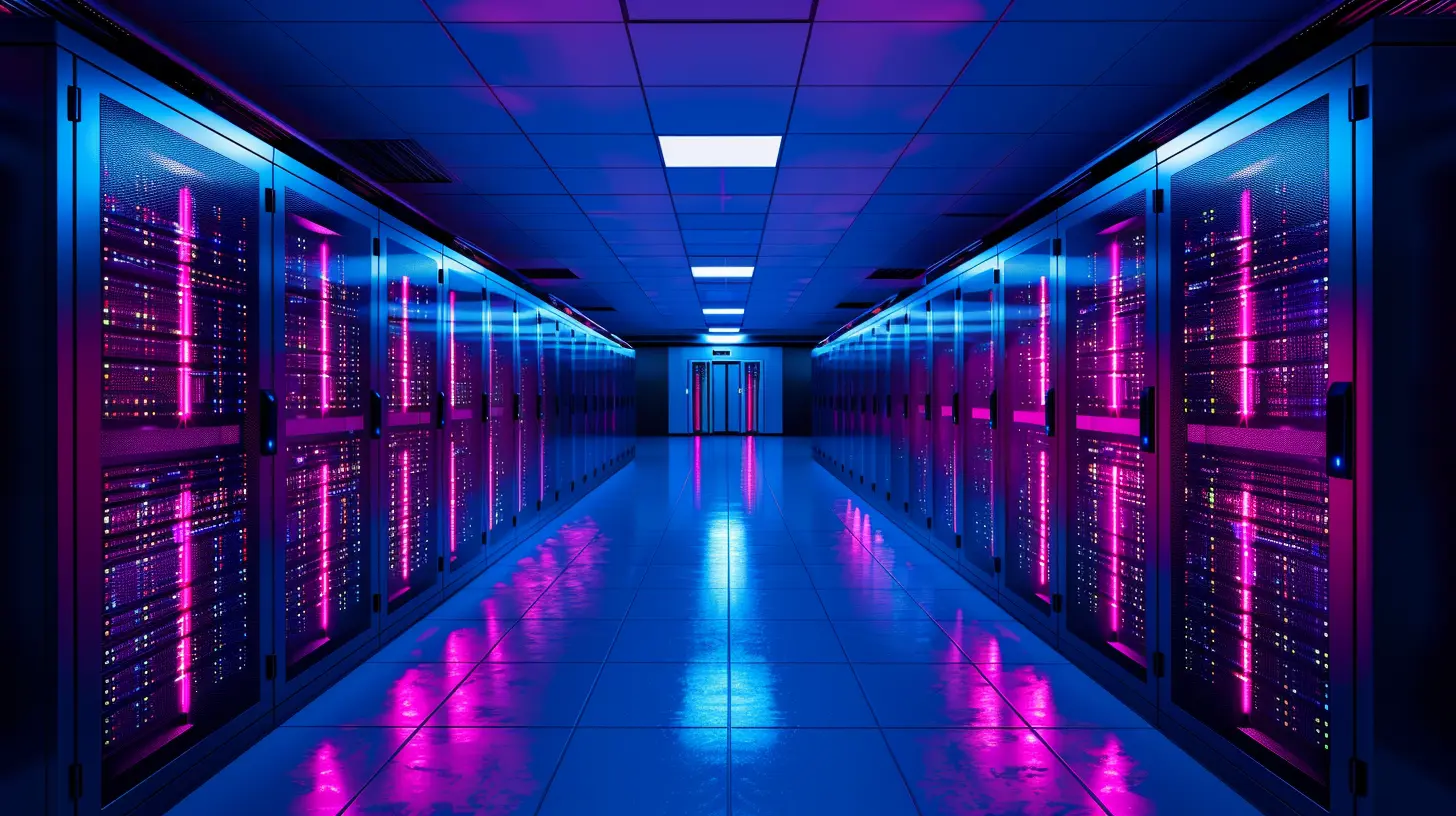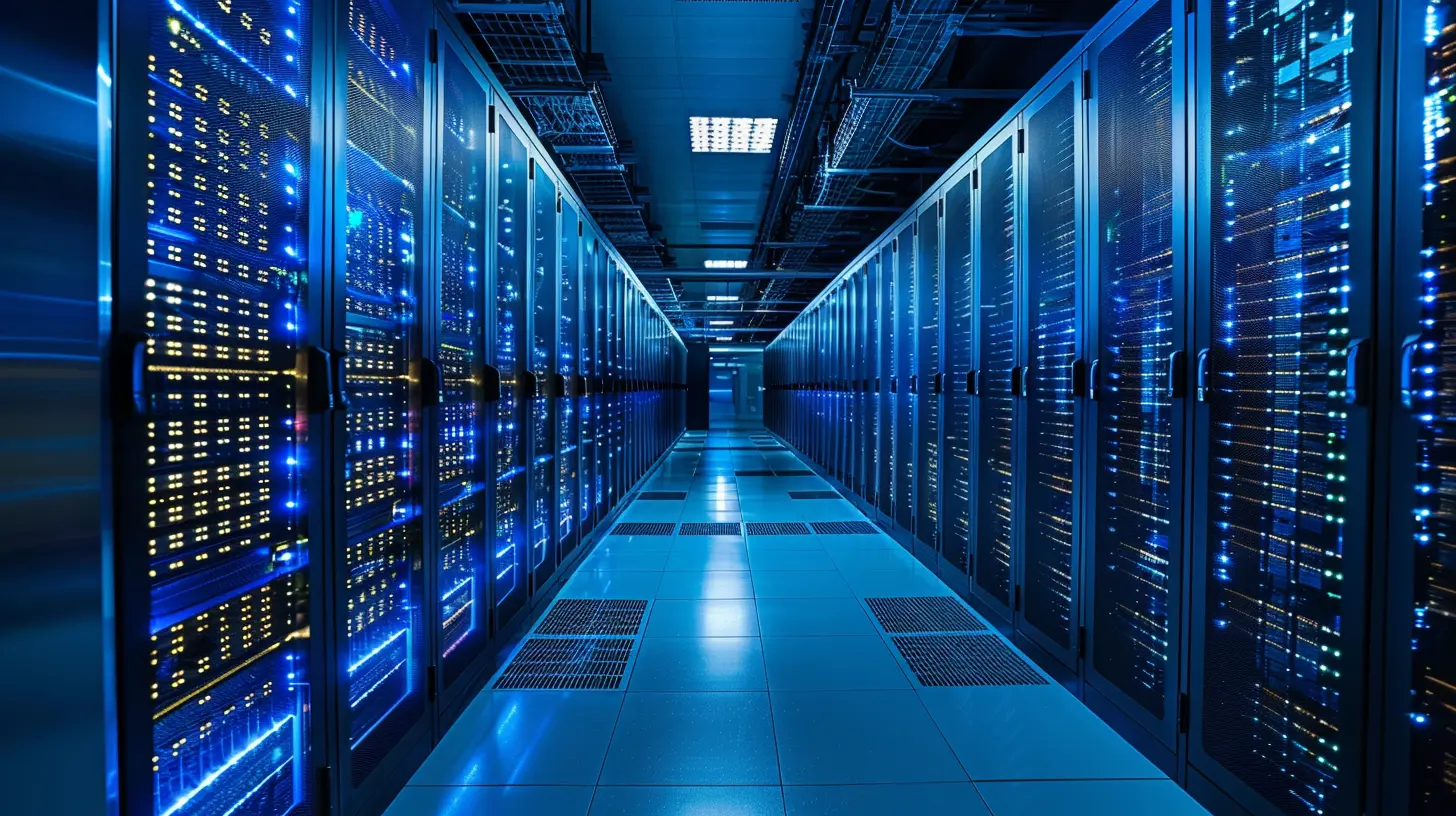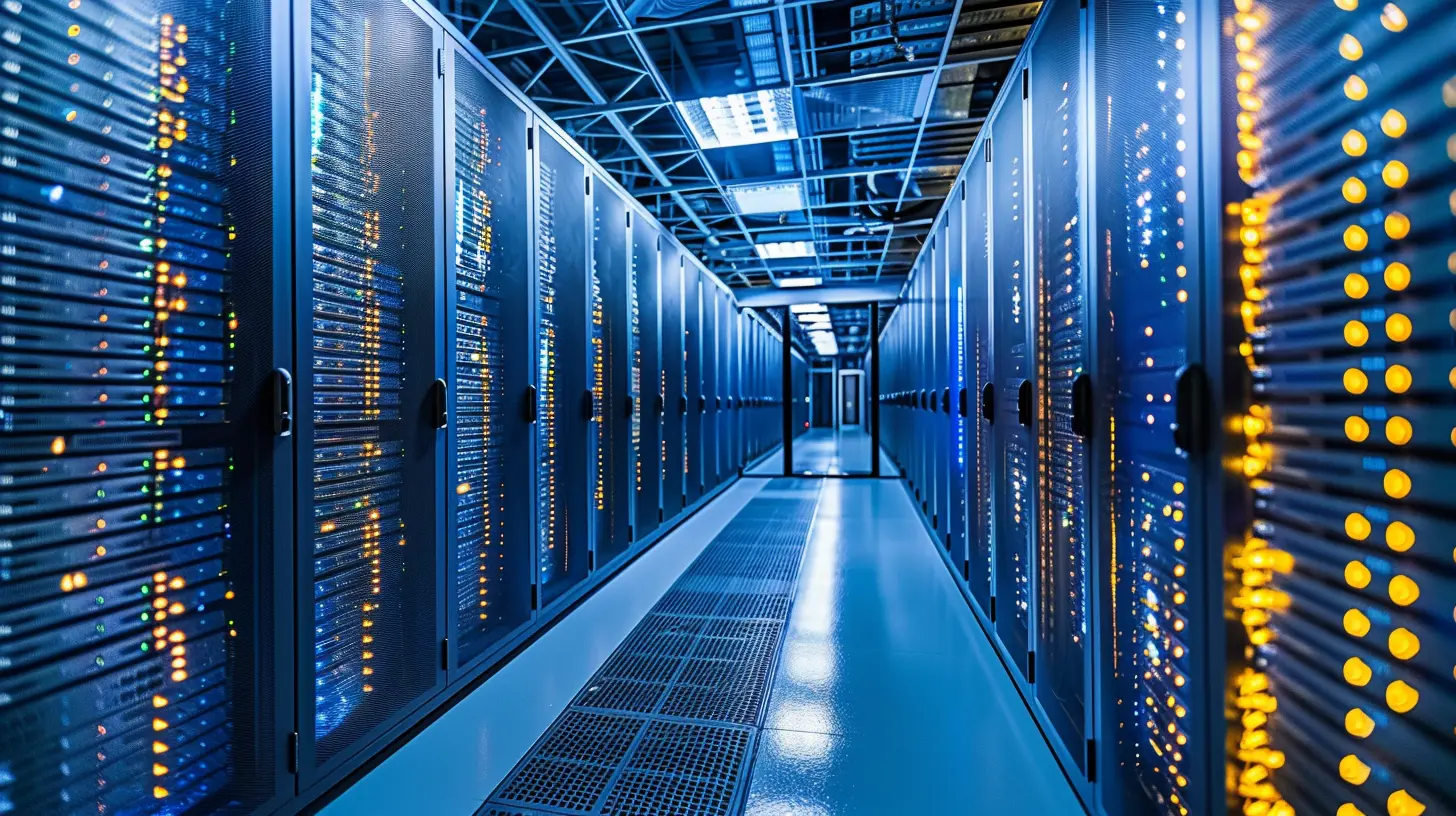Cooling Solutions for Data Centers: Innovations in Heat Management
4 November 2025
Running a data center is like managing a high-performance sports car—it generates an enormous amount of heat and requires constant cooling to prevent overheating. The demand for faster computing, cloud services, and AI-driven tasks has skyrocketed, making data center cooling one of the most critical challenges in modern tech infrastructure.
Without effective cooling, overheating can lead to hardware failures, reduced efficiency, and skyrocketing energy costs. But here’s the good news: innovative cooling solutions are revolutionizing heat management in data centers. From liquid cooling to AI-driven optimizations, let’s break down the latest innovations keeping data centers cool and efficient. 
Why Cooling Is a Major Concern for Data Centers
Data centers process and store massive amounts of information 24/7. With thousands of servers running simultaneously, these facilities generate an intense amount of heat. If left unchecked, this heat can cause system malfunctions, shorten hardware lifespans, and increase operational expenses.The Rising Concern of Energy Consumption
According to studies, data centers account for nearly 1% of global electricity consumption. A significant chunk of that energy is used to cool the equipment, highlighting the need for more efficient cooling techniques. Traditional air-based cooling methods are effective but often inefficient, leading to high electricity bills and environmental concerns.So, how do we fix this? Enter modern cooling innovations. 
The Latest Innovations in Data Center Cooling
1. Liquid Cooling: A Game-Changer
Ever noticed how your car relies on a liquid coolant to keep its engine from overheating? The same principle applies to data centers. Liquid cooling is gaining popularity because it is far more effective at heat dissipation than air-based methods.Types of Liquid Cooling Methods
- Direct-to-Chip Cooling: A cooling liquid is circulated directly across heat-generating components like CPUs and GPUs, providing targeted cooling.- Immersion Cooling: Servers are entirely submerged in a non-conductive cooling liquid that absorbs heat efficiently.
- Rear Door Heat Exchangers: Chilled liquid is pumped through a heat exchanger mounted on the back of server racks, dissipating heat without spreading it into the data center.
Liquid cooling significantly reduces power consumption and improves operational efficiency, making it a go-to choice for high-performance computing (HPC) environments.
2. AI-Powered Cooling Optimization
Artificial intelligence is transforming almost every industry, and data center cooling is no exception. AI-driven cooling systems use machine learning to analyze heat patterns and adjust cooling techniques dynamically.- Smart Cooling Algorithms: AI continuously monitors server temperatures and adjusts cooling efforts based on demand.
- Predictive Maintenance: AI can predict when cooling systems might fail and suggest proactive measures, preventing costly downtimes.
- Energy Efficiency Enhancements: By optimizing fan speeds and coolant flow, AI ensures minimal energy wastage.
Companies like Google have already implemented AI-driven cooling, reportedly reducing their data center energy consumption by 40%—a game-changer for sustainability.
3. Free Cooling: Leveraging Natural Resources
Why rely on artificial cooling when nature offers a free solution? Free cooling uses naturally cool air or water from external sources to reduce cooling costs.Popular Free Cooling Techniques:
- Airside Economization: Cool ambient air is circulated through the data center, reducing the need for traditional cooling units.- Water Cooling with Natural Sources: Some facilities use nearby lakes, rivers, or underground wells to cool their systems, cutting down on mechanical cooling needs.
- Evaporative Cooling: This method utilizes water evaporation to absorb heat, acting as a more energy-efficient alternative to standard air conditioning.
Data centers in colder regions particularly benefit from free cooling, harnessing the chilly weather to keep their systems running smoothly.
4. Phase Change Cooling: The Future of Heat Management
Phase change cooling is another exciting innovation. It works by using special cooling fluids that change from liquid to gas as they absorb heat. Once the gas cools down, it condenses back into liquid form, creating a continuous cooling cycle.This technique is highly effective because it requires minimal energy, providing a sustainable way to cool data centers with lower energy footprints.
5. Microchannel Cooling for Precision Cooling
Microchannel cooling focuses on cooling specific high-heat components rather than the entire data center. This technique uses tiny cooling channels embedded in heat sinks, allowing liquid coolants to flow through them efficiently.This technology is particularly useful for compact computing environments, such as edge data centers, where traditional cooling methods can be too bulky or inefficient.
6. Thermal Energy Storage for Load Balancing
Thermal energy storage (TES) is becoming a hot trend—pun intended. This method stores excess cooling energy during off-peak hours and releases it when needed.How does it work? Special materials, like phase change materials (PCM), absorb and store cooling energy. When servers heat up, the stored cooling energy is released, reducing real-time cooling requirements.
This approach improves energy efficiency, lowers costs, and ensures cooling reliability even during peak demand periods. 
The Environmental Impact of Efficient Cooling
Let’s talk about sustainability. Traditional cooling methods are notorious for their high carbon footprint, adding to climate change concerns. With energy-efficient cooling technologies, data centers can drastically reduce both their power consumption and environmental impact.In fact, companies adopting liquid cooling, AI-driven optimizations, and free cooling have achieved reductions of up to 50% in cooling-related energy use. That’s a step in the right direction for a greener future. 
Final Thoughts
Cooling solutions in data centers are evolving rapidly, and for good reason. As the demand for massive computing power continues to grow, so does the need for efficient, sustainable, and cost-effective cooling methods.From liquid cooling to AI-powered optimizations, the innovations in heat management are not just about efficiency; they’re about redefining the future of data center operations. This is just the beginning of an exciting era in tech infrastructure—one where smarter, greener, and more effective cooling solutions are shaping the data centers of tomorrow.
all images in this post were generated using AI tools
Category:
Data CentersAuthor:

Reese McQuillan
Discussion
rate this article
1 comments
Roman Cannon
Great insights! As data demands grow, innovative cooling solutions are crucial for sustainable tech. Embracing advanced heat management not only boosts efficiency but also ensures the longevity of our infrastructure. It's exciting to see how innovation in this area can contribute to a greener future for data centers. Keep up the fantastic work!
November 4, 2025 at 4:39 AM


